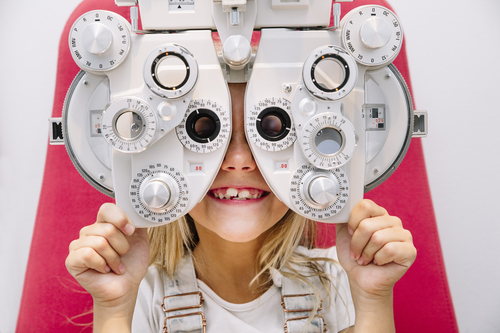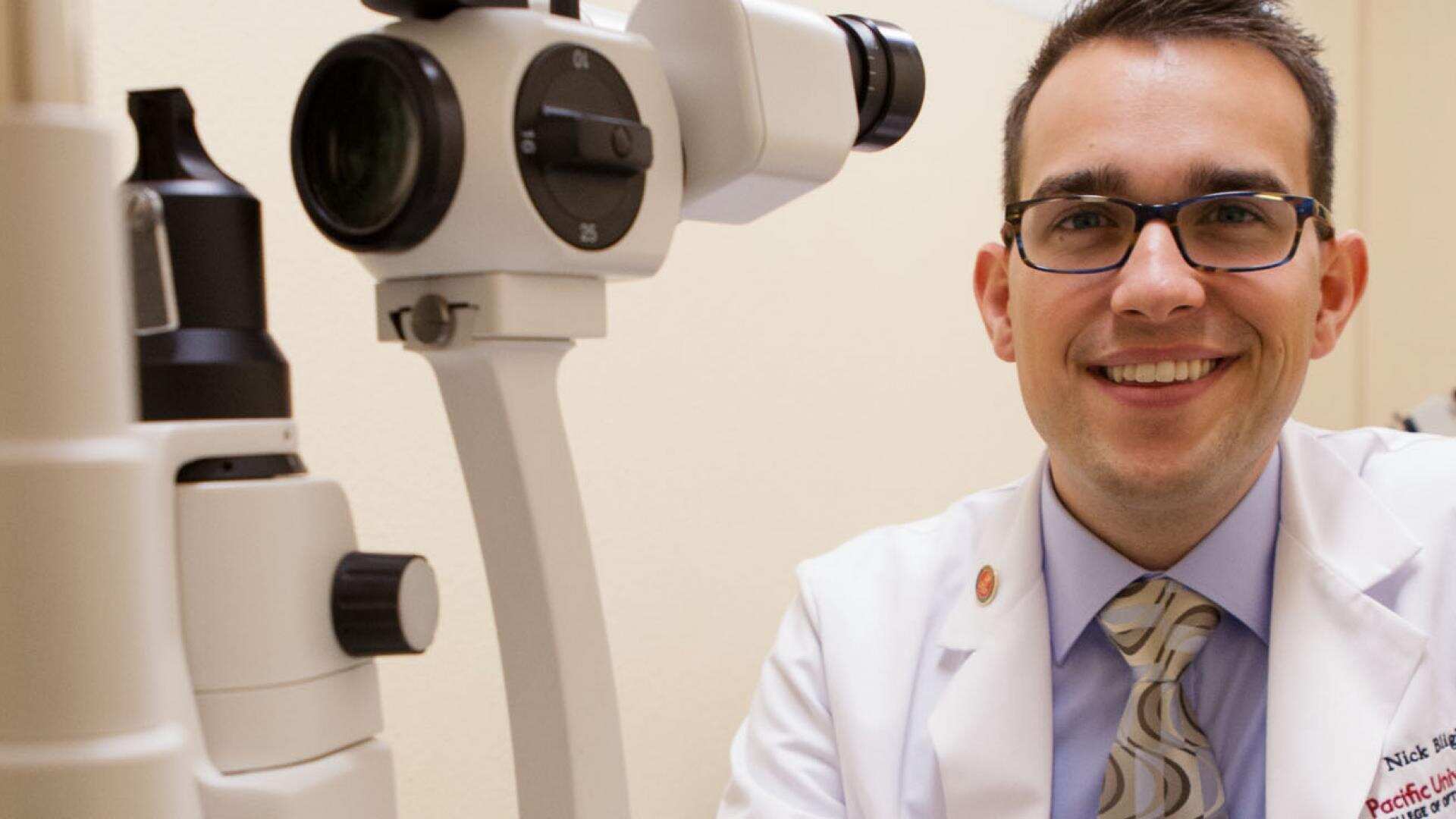Top Reasons to Visit an Optometrist Chino for Your Eye Health
Top Reasons to Visit an Optometrist Chino for Your Eye Health
Blog Article
Exploring the current Technical Developments in Optometry and What They Mean for Optometrists
In the ever-evolving field of optometry, current technological developments are improving exactly how professionals approach eye treatment. From the precision of Optical Comprehensibility Tomography to the nuanced understandings used by AI-driven diagnostic devices, these developments are establishing new criteria in client analysis and treatment. Teleoptometry is positioned to redefine ease of access, ensuring that competence transcends geographical restrictions. As these innovations permeate the technique, optometrists are faced with the obstacle of embracing these devices to boost individual end results. The question stays: just how will these technological changes redefine the functions and obligations within the profession?
Technologies in Diagnostic Tools
Progressing the area of optometry, developments in diagnostic devices have revolutionized the method eye treatment specialists assess and diagnose eye problems and aesthetic problems. The previous years has experienced substantial technical innovations, making it possible for more extensive and precise examinations. Optical Comprehensibility Tomography (OCT), for instance, gives high-resolution cross-sectional photos of the retina, enabling the very early discovery of diseases such as glaucoma and age-related macular deterioration. This non-invasive imaging strategy has actually come to be crucial in contemporary optometric technique.
Another trick development is the intro of innovative corneal topography systems, which map the surface curvature of the cornea with accuracy. These tools are especially useful for fitting get in touch with lenses and detecting corneal disorders. Electronic retinal imaging has actually changed traditional ophthalmoscopy, using detailed, panoramic views of the retina that assist in detailed visual evaluations.
The advancement of wavefront aberrometry has actually likewise been critical, enabling the analysis of refractive errors with unmatched accuracy (Eye Doctor Optometrist). This technology assists in personalizing rehabilitative lenses and boosting medical results for refractive surgical procedures. Jointly, these analysis innovations equip eye doctors to supply exceptional patient care, guaranteeing early intervention and tailored treatment approaches, inevitably boosting aesthetic wellness outcomes
AI in Person Management
Structure on the foundation of sophisticated analysis tools, the incorporation of fabricated intelligence (AI) in person monitoring represents a transformative jump for optometry. AI systems are increasingly employed to boost efficiency, precision, and personalization in person care.
Moreover, AI-driven platforms promote streamlined patient communications and administrative procedures. Automated scheduling, digital examinations, and individualized follow-up strategies not only improve client contentment yet also enhance time administration for specialists. These systems can triage people based on the urgency of their conditions, ensuring that those in important need get punctual attention.
Moreover, AI boosts decision-making by providing eye doctors with evidence-based recommendations and treatment pathways. By integrating data from digital health records, AI tools use insights that notify professional choices, reducing the danger of errors and improving person outcomes. As AI remains to develop, its function in individual monitoring will likely increase, improving the landscape of optometric care.
Breakthroughs in Retinal Imaging
In the world of optometry, retinal imaging has observed impressive technical developments that are enhancing diagnostic abilities and patient treatment. Developments such as Optical Coherence Tomography (OCT) and fundus photography have actually reinvented exactly how eye doctors envision and assess the retina.
Improved imaging techniques like OCT angiography are additional refining diagnostic accuracy. This non-invasive technique maps blood flow in the retina, using critical understandings into vascular health and wellness without the requirement for color injections. In addition, flexible optics modern technology is being integrated right into retinal imaging systems to fix ocular aberrations, delivering extraordinary image clearness. Such advancements facilitate the recognition of min pop over to these guys retinal changes that might signify illness development.
Additionally, advancements in expert system are increasing retinal imaging by allowing automated analysis of big datasets. These systems aid eye doctors in recognizing patterns indicative of pathology, thus enhancing diagnostic precision and performance. Jointly, these technologies are transforming retinal imaging into a cornerstone of contemporary eye treatment, improving end results and expanding therapeutic possibilities.
Teleoptometry's Expanding Duty
Teleoptometry is progressively coming to be an essential element of eye care, driven by improvements in electronic communication and diagnostic tools. This is specifically valuable in country and underserved areas where access to specialized eye treatment is commonly limited.
The combination of expert system (AI) more improves teleoptometry, making it possible for the evaluation of visual information and helping in the detection of eye conditions such as glaucoma and diabetic retinopathy. AI-powered algorithms can quickly analyze complicated imaging information, supplying optometrists with valuable understandings that bolster professional decision-making.
Moreover, teleoptometry supports continuity of treatment with smooth assimilation with electronic health records (EHRs), enabling optometrists to maintain comprehensive patient histories. This makes sure that individuals receive tailored and regular care even when speaking with various practitioners.
Regardless of these advantages, obstacles remain, including making sure data protection and managing client expectations. However, teleoptometry represents a considerable stride in the direction of more available, efficient, and patient-centered eye treatment. As innovation progresses, its duty is positioned to broaden even more.

Future Trends in Eye Care
A myriad of cutting-edge patterns is readied to reshape the future of eye treatment, driven by technical improvements and the evolving needs of clients. One considerable fad is the assimilation of fabricated intelligence (AI) in diagnostics, which promises to improve the precision and efficiency of eye evaluations. AI algorithms can analyze large quantities of information from retinal photos, potentially finding problems like diabetic person retinopathy and glaucoma earlier than traditional methods.
Moreover, customized medicine is acquiring traction in optometry, with hereditary screening educating customized treatment plans. This approach aims to enhance patient results by tailoring treatments to individual hereditary accounts. Wearable modern technology, such as smart get in touch with lenses, is additionally imminent, providing real-time surveillance of intraocular stress or glucose levels, thus supplying continuous insights into systemic and eye health.
The fostering of increased truth (AR) and virtual truth (VIRTUAL REALITY) in training and person education is an additional arising fad. These technologies use immersive experiences that can enhance understanding and skills both for optometrists and clients. As these trends progress, optometrists should remain abreast of technological innovations to provide sophisticated treatment, making sure enhanced patient end results and fulfillment in the dynamic landscape of eye treatment.
Conclusion

Jointly, these diagnostic innovations empower eye doctors to deliver remarkable patient care, guaranteeing very early treatment and customized therapy approaches, inevitably enhancing aesthetic wellness outcomes.

As these modern technologies proceed to advance, optometrists must adapt and incorporate them into technique, eventually maximizing workflow effectiveness and raising the standard of eye care supplied to people.
Report this page